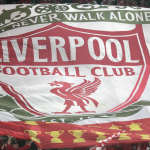FOOTBALL'S millennial generation is coming to an end and it has every right to describe itself as the greatest the game has seen.
Cristiano Ronaldo (born February 1985, in arcade game terms: shortly before Paperboy was released) and Lionel Messi (June 1987, Operation Wolf) still bestride the world game like a two-headed goal beast but the end is nigh. The many talents of Generation Z are coming, and it feels like 2019-20 is the season where the guard definitively changes. New decade, new danger.
Discovering the Gen Z icons was a job that kept scouts awake at night five or so years ago. There’s still a chance that a late bloomer could rise and dominate the 2020s, but really, the next superstars are out there already, gaining strength and gaining experience. And just as professional clubs now combined traditional scouting with data analysis to identify new talent, we can do the same.
The graphic below is a complete sweep of every player aged 24 or under in the English, Spanish, Italian, German, French, Portuguese and Dutch top-flights since the start of last season, showing their xG per 90 and shots per 90. Opportunists (fewer chances but higher quality) on the left and optimists (more chances but lower quality) on the right.
It’s important to note that at this stage of a player’s career there’s not a ‘correct’ approach to follow. Back in 2003-04, Cristiano Ronaldo, in his first season in the Premier League, hit 66 shots, with only 20 of them going on target and only four resulting in goals. That same season Robert Pires, in his pomp, had 53 shots, 26 on target and scored 14 goals as Arsenal went unbeaten in the league. It’s unfair to expect young players to perform at the level of established stars, but there are clues if you know where to look.
That said, one name straddles the image like an elite King, and that is Kylian Mbappe. His total of 32 goals for Paris Saint-Germain in 2018-19 was the first time an under-21 player had scored 30+ in one of the top five leagues since (Brazilian) Ronaldo did it for Barcelona in in the 1990s. As benchmarks go, that’s a good one. As is the fact that he is the second youngest player to score in a World Cup final after Pele. Ronaldo, Pele, Mbappe. Woof.
Other players of note the graphic throws up include Gabriel Jesus, who clearly benefits from the smorgasbord of high quality opportunities Manchester City create, Timo Werner, Vinicius Junior and Federico Chiesa. Tammy Abraham is also there, after his excellent start this season, and although the Lampard era at Chelsea is as young as many of the players he has promoted, it is worth remembering that Lionel Messi came into the Barcelona side as part of a bumper crop of graduates, who then flourished under a progressive manager who was a club legend.
It’s all very well having a stellar couple of months, though, it’s the consistency of Messi and Ronaldo that looms over everyone. Messi, for instance, has scored 25+ goals in each of the last 10 seasons and has reached double figures for assists in all but one of those campaigns.
And ultimately that’s why Mbappe is in pole position to dominate the 2020s. 89 goal involvements in 101 games for a player who is not even 21 until December has the rest of Europe on salivation mode: extreme. Nagging rumours that he might be targeted by Liverpool in 2020 seem outlandish but any club who can lure him from Paris will surely be setting themselves up for the entire decade. Time moves forward inexorably but the value of goals is unbending.




